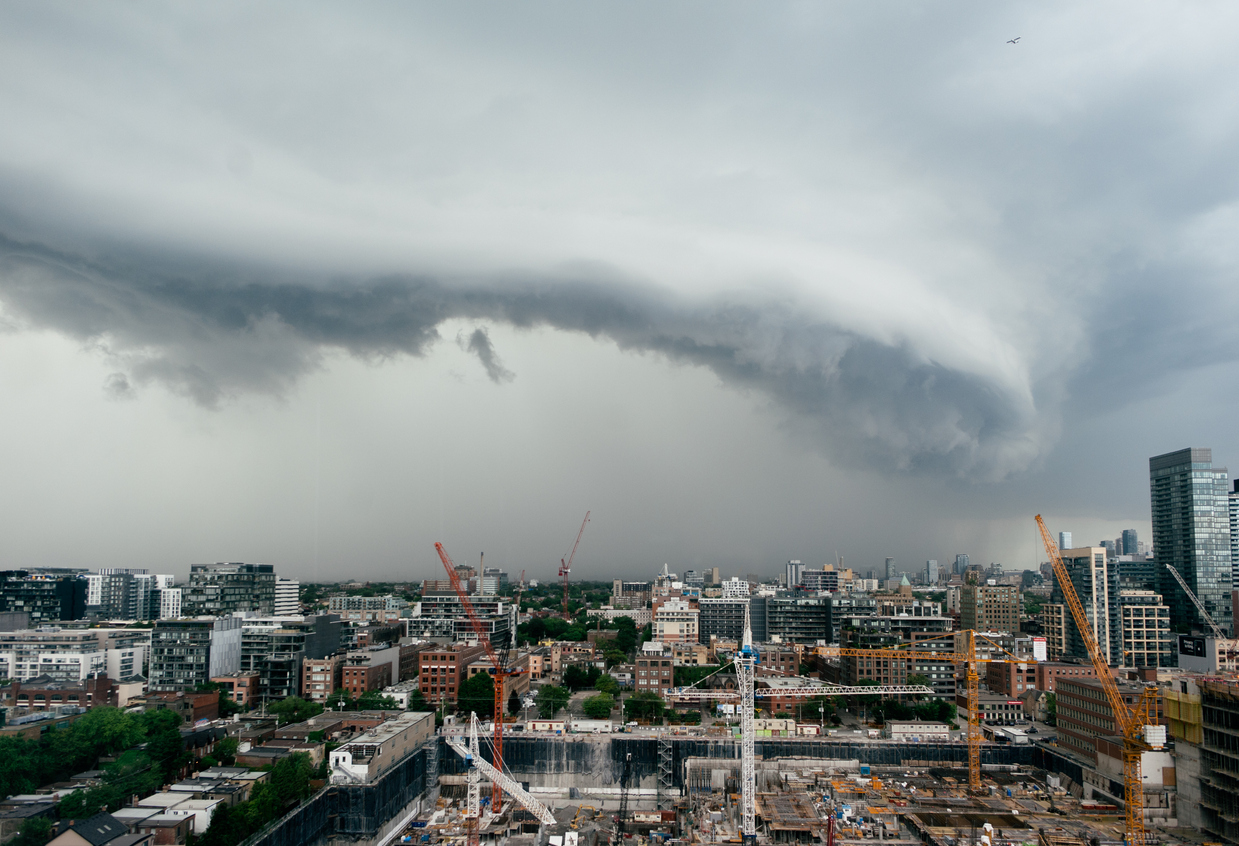Tornadoes, hail, winds, and rainfall from convective weather and severe thunderstorm outbreaks are the most damaging natural catastrophes in the United States and have become one of the most significant contributors to annual insurance and reinsurance losses. According to PropertyCasualty 360, based on Aon’s Impact Forecasting report, severe convective storms throughout the country resulted in 12 billion-dollar events and caused a total of $29 billion in insured losses in 2022.
Convective storms are the result of warm, moist air rising from the earth. They manifest in different ways, depending on atmospheric conditions – from drenching thunderstorms with lightning to tornadoes, hail, or destructive straight-line winds.
There are 1,200 tornadoes and more than 23 million cloud-to-ground lightning strikes annually, according to the National Weather Service. Property insurers have faced catastrophic losses in Tornado Alley, from Texas through Oklahoma to Kansas, Nebraska, and South Dakota.
The Insurance Information Institute estimates that direct lightning strikes at residential and non-residential properties cause millions of dollars in fire damages every year. Furthermore, according to Aon, hail can contribute 50% to 80% of severe convective storm insured losses in any given year, causing damage to buildings, vehicles, and crops. Building roofs are the most susceptible to hail damage, with the cost of replacement and repair determined by the roofing materials used.
Risk Sharing
Economic development and population shift, such as the significant growth experienced in the Midwest, have contributed to increasing losses from convective storms, according to the Insurance Information Institute. When a thunderstorm, tornado, or hailstorm passes through an area now, it affects a much larger group of properties, resulting in much greater loss accumulation for an insurer.
With greater risk and losses mounting, insurers are adding newer and broader deductibles in Property insurance policies. For example, from the Southeast to Texas and the Great Plains to the Front Range of the Rockies, policyholders are taking on a greater share of risk with higher deductibles. Insurers are also including wind/hail policy deductibles for properties in additional regions hit by convective storms in recent years.
As insurers turn to convective storm catastrophic models to manage risk, not only are deductibles increasing but so are property rates, depending on the client’s exposure. Properties in high-risk areas are seeing greater underwriting scrutiny and higher costs. According to an article in Moody’s RMS, “Historically, insurance and reinsurance insurers have viewed severe convectional storms as an attritional loss, but in the last five to 10 years the changing trends have altered that perception. That’s where there is this need for high-resolution modeling, which increasingly insurers have been asking for to improve their exposure management practices.”
Hazard Mitigation
The Insurance Information Institute underscores the importance of hazard mitigation by businesses, individuals, and communities to get ahead of risks posed by convective storms. According to the National Institute of Building Sciences, for $1 spent on hazard mitigation, the nation can save up to $13 in future disaster costs. Hazard mitigation, for instance, involves ensuring property and buildings are well constructed and maintained and securing any objects that can potentially become projectiles in high winds. In hail-prone areas, vehicles and equipment should be covered to mitigate damage. It’s also critical to identify damage quickly after an event to prevent further loss, for example, from water seepage.
About Seneca Insurance Companies
Seneca Insurance Companies are known for having a broad appetite in writing property risks. We offer both admitted and non-admitted ISO-based policies, with catastrophe perils offered based on location and risk characteristics.

